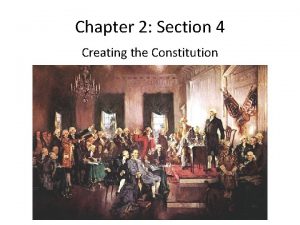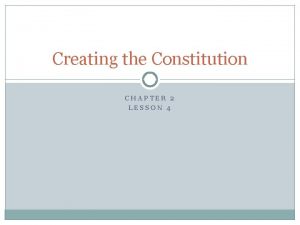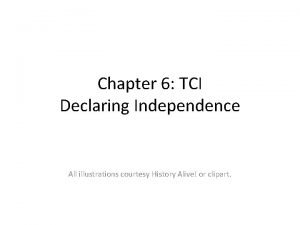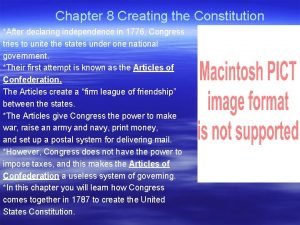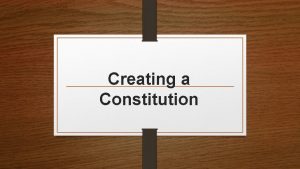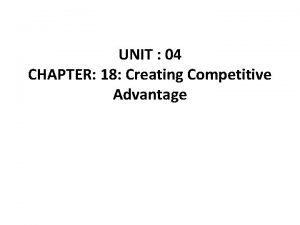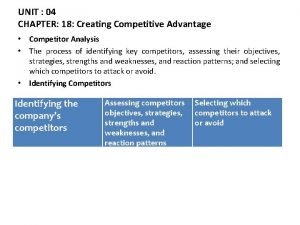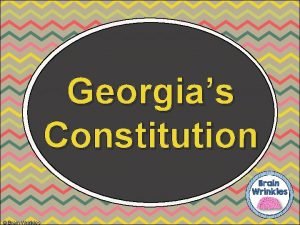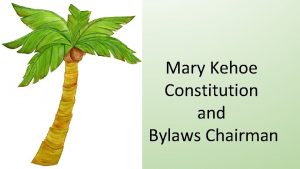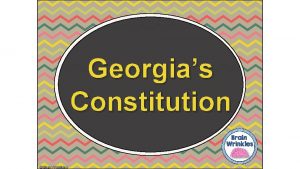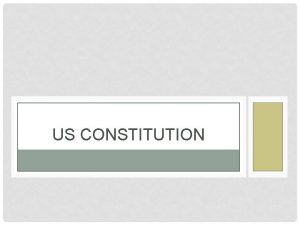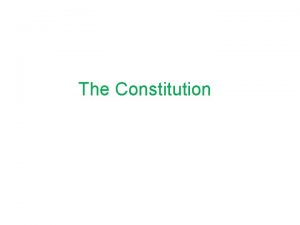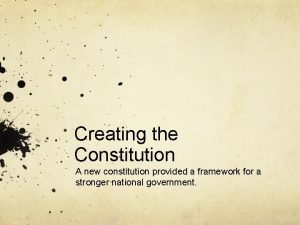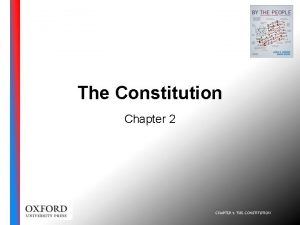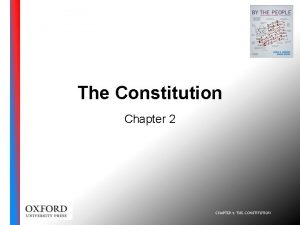CREATING A CONSTITUTION Chapter 3 Creating a Constitution










- Slides: 10

CREATING A CONSTITUTION Chapter 3

Creating a Constitution • During the Revolutionary War the colonies created a weak government to hold them together till the war was over • This governmental framework was referred to as the Articles of Confederation • The Articles of confederation were too weak to run a nation. Articles of Confederation • All they could do was to declare war, raise armies, sign treaties and coin money • The primary achievements under the Articles was to settle the west and negotiate commercial treaties. • They did not even have the power to raise money through taxing or regulate commerce (trade) • Because of this some states set up customs post on their border and taxed incoming goods

Creating a Constitution • Under the Articles of Confederation the Congress did manage to sign the Northwest Ordinance • The N. W. Ordinance set the rules for governing the new western territories (land around the Great Lakes) and how territories would become states • When a territory reached 60, 000 people they could apply to become a state • The N. W. Ordinance also did the following: a-Outlawed slavery b-created new territory North of the Ohio River and East of the Mississippi River c-Guaranteed freedom of speech and property rights (same ideas expressed in Declaration of independence)

Creating a Constitution • The Articles would truly show that they could not hold a nation together when Shay’s Rebellion occurred. • Mass. had a large war debt and taxed many of the small poor farmer (many who were returning soldiers) to raise money instead of issuing paper money. • The taxes would cause them to lose their farms and the Mass. government was not listening to their complaints. • They rebelled and closed down courthouses to stop farm foreclosures. Daniel Shay who had lost his farm emerged as a leader. • Shots were fired and several farmers were killed during the rebellion. • People with more money saw the rebellion as a sign that the republic (nation) was at risk • The government under the Articles did not have the power to step in and take care of the problem • The weakness of the Articles and civil unrest in other areas led the Congress to call a convention (meeting) of the states the revise (modify) the Articles of Confederation. Shay’s Rebellion

Creating a Constitution • There was a called meeting of the colonies to examine the Articles of Confederation and to modify them. • Those who favored a strong national government to deal with other countries and the needs of the new nation were called “Nationalist” • They included people such as Benjamin Franklin and Alexander Hamilton • They realized that the Articles were not strong enough to run a nation and deal with foreign powers. • They would meet at the statehouse in Philadelphia, PA • They decided that the Articles could not be modified and went about creating a new framework of government which would become the U. S. Constitution. • The smartest minds of the time would work on a government that balanced power with rights of the citizens

Creating a Constitution • The Constitutional Convention had to protect and balance States rights with the needs for a stronger national government • It was worked on , compromises had to be reached (Great Compromise and 3/5 th Compromise), but it was finally agreed upon and sent to the States for approval. • The Constitution contained many parts designed to make it functional but not overly powerful. • The Constitution would be a representative democracy • It would be a federal system that divides power between the state and federal governments. • There would be a separation of powers with three branches dividing the power. • Checks and balances would be put in place to prevent any one branch from becoming too powerful. (the power to limit the other branches powers)

Creating a Constitution • The Constitution, unlike the Articles, was made to be modified through Amendments. • The amendment process has two stages, proposal and ratification. • To propose an amendment takes a 2/3 rd vote of the members of both the House and the Senate. • The amendments then have to be ratified (approved) by 3/4 th of the states legislatures Amendments and Chief Executive • The aim of the framers of the Constitution was to create a strong leader to head the Executive Branch. • This executive (President) would hold the power to veto (or reject) laws from Congress, appoint judges, propose legislation and act as commander-in-chief of the armed forces.

Creating a Constitution • As soon as the Constitution was written and presented to the states, delegates rushed home to push for ratification (approval). • 9 of the 13 states had to approve it for it to become the new framework for government. • People debated its power and questioned the states role and power. • Those who supported the Constitution were called Federalist and those who opposed it, Anti-Federalist. Federalist v. Anti-Federalist • Both tried to support their position. • The Federalist pushed for ratification and the idea of a federal government and assured the populous that the federal government would share power with the states. • The Anti-Federalist were not against a federal (power shared between state and federal) type government but wanted assurance for states equal rights. • The opponents wanted to know if the State or the federal/national government would be the supreme power.

Creating a Constitution Federalist v. Anti-Federalist • People such as Patrick Henry and John Hancock were antifederalist • Many Anti-Federalist were western farmers living far from the coast. • They were weary of the wealthy and powerful men who wrote the Constitution. • Many believed it too strong and in need of a Bill of Rights to protect the citizens from the government. • The Federalist were more convincing and had offered up a plan for a new nation. • In their writings (The Federalist) they explained how the new Constitution worked and why it was needed. • The writers of the Federalist included such as John Jay , Alexander Hamilton and James Madison (federalist)

Federalist v. Anti-Federalist Creating a Constitution • To appease the Anti-federalist the Constitution does not have the power to establish governments on the local level • Federalists like Madison argued that the states would retain their powers Anti federalists like Samuel Adams believed in John Locke’s natural rights. Locke argued states have right to overthrow government if peoples (states) natural rights are threatened. Samuel Adams did not want state’s independence threatened by Constitutional government. It Passed! • Samuel Adams and John Hancock of Massachusetts refused to sign it until it guaranteed a Bill of Rights was attached. • All the states (Rhode Island & North Carolina being the last) ratified the new Constitution by November 1789.
 Chapter 2 section 4 creating the constitution
Chapter 2 section 4 creating the constitution Chapter 2 lesson 4 creating the constitution
Chapter 2 lesson 4 creating the constitution Tci declaration of independence
Tci declaration of independence Chapter 8 creating the constitution
Chapter 8 creating the constitution Creating the constitution vocabulary
Creating the constitution vocabulary Texas constitution vs us constitution
Texas constitution vs us constitution Nc constitution vs us constitution
Nc constitution vs us constitution Constitution what is constitution
Constitution what is constitution Lesson 1 principles of the constitution
Lesson 1 principles of the constitution Chapter 18 creating competitive advantage
Chapter 18 creating competitive advantage Competitor centered company
Competitor centered company
